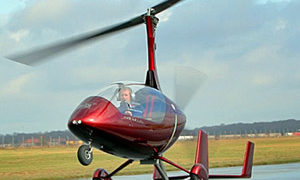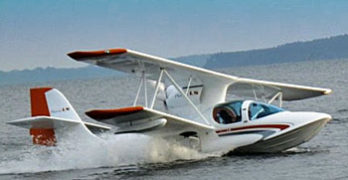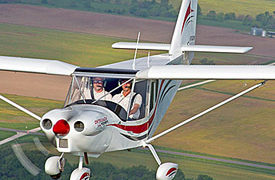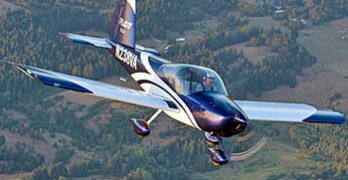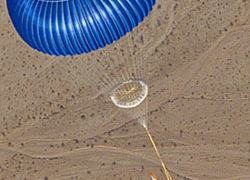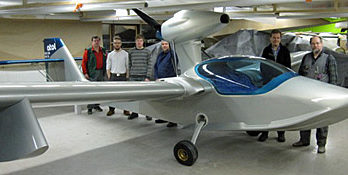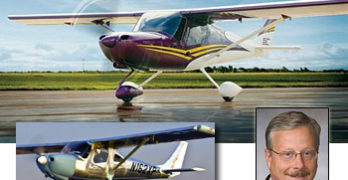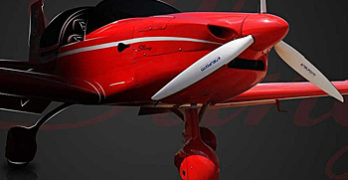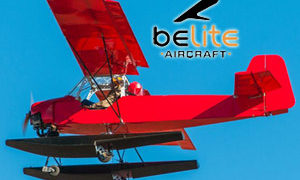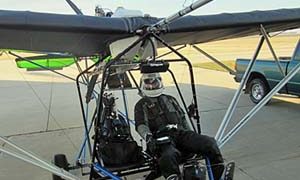Wings that go around in circles enjoy their own special niche in American Light-Sport aviation. Yankees can buy ultralight helicopters — including the Mosquito that can fit into Part 103, which is amazing in itself — and Americans can buy kit-built gyrocopters or gyroplanes (the terms are used interchangeably). The good news is Americans do indeed buy and build; AutoGyro USA sold some 30 examples in the last couple years. However, due to an apparent (and somewhat mysterious) intraagency dispute, fully built Special LSA gyroplanes were never allowed by FAA. Some say it was a turf war between the Small Aircraft Directorate and the Rotorcraft Directorate; though others disagree this was the problem. Whatever the explanation, no ready-to-fly LSA gyros are available in the USA despite years of effort by ASTM committee members, which has a standard ready. This is a shame as I rediscovered for myself on a flight at Sebring.
Search Results for : Flight Design
Not finding exactly what you expected? Try our advanced search option.
Select a manufacturer to go straight to all our content about that manufacturer.
Select an aircraft model to go straight to all our content about that model.
Super Petrel LS Is (Almost) the Newest SLSA
In the beginning … OK, a few years ago, FAA went around to a couple dozen LSA producers to evaluate the state of the then-new LSA industry. The agency teams did not conduct an audit, they emphasized. More intensive examinations, actual audits, followed in recent years. Last year the agency issued new guidance to help them and everyone else judge who really was and was not a manufacturer. If the need for such a definition surprises you, remember, the brave new world of Light-Sport Aircraft threw curves to government regulators, captains of industry, aircraft design geniuses, plus all we rank and file customers. Everyone learned a great deal as an entirely new sector of aviation was given birth … one, by the way, with a worldwide impact as more countries sign on to the ASTM standards method of assuring airworthiness. The LSA industry is now a few months away from its tenth birthday and the gears of production are beginning to mesh more smoothly than ever.
Zenith Now Shipping CH 750 Cruzer
Zenith Aircraft based in Mexico … Missouri, to be clear, is one of the most solid and impressive kit producers in the light aircraft world. Chris Heintz designs were previously manufactured as fully built LSA by another company. Though that organization discontinued some years back the kit supplier and its models have thrived as before, every year delivering a number of airplane kits that could make other producers jealous. Last year Zenith introduced their newest model as a variation of their very popular “Sky Jeep,” known officially as the CH 750 STOL. Giving the airplane more cross cruising capability resulted in an airplane logically named Cruzer. Simply put by 20-year Zenith demo pilot veteran Roger Dubbert, “Some of our customers wanted an aircraft that would go a little faster.” The total change added about 20% to cruise speed compared to the 750 STOL. Recently, Zenith announced shipment of the first CH 750 Cruzer kits.
Van’s Confirms 2014 Production of RV-12 SLSA
We’ve seen “legacy” general aviation builders depart the Light-Sport Aircraft scene. The reasons are varied but certainly this is highly competitive space with frequent innovations applied and clean-sheet designs emerging like clockwork (more than one per month for ten straight years!). Once a company becomes accustomed to the profits turbines and jets can generate, small piston aircraft looks like a lean market. However, as one major name exits another arrives. A year and a half ago at AOPA’s last Palm Springs, California Summit, Van’s Aircraft announced their entry to Special LSA through an arrangement with Synergy Air. It was something of a toe in the water for the large kit builder. To no one’s surprise, they sold out immediately. After spinning up operations to build and deliver the first batch, Van’s and Synergy evaluated and chose to continue onward with building ready-to-fly airplanes.
Dick VanGrunsven, founder of Van’s Aircraft, Inc., and Wally Anderson, head of Synergy Air, recently announced that production of the RV-12 SLSA will continue in 2014.
BRS Moves Upward; Saves Those Moving Downward
For 18 years I worked with a great team at BRS Parachutes (as it was then called; they since renamed it to BRS Aerospace as they ventured into defense contracting). I left more than a decade ago and this website has since been my new home. I worked at BRS before parachutes were accepted and it was a great challenge and joy to help bring this life-saving product to market. The huge breakthrough that allowed BRS to gain the level of mainstream approval it enjoys today was one company: Cirrus Design. Co-founder Alan Klapmeier had lived through a mid-air collision and was determined his SR20 would have a whole-airframe parachute on it. While the ’20 and ’22 have much to speak for them, the models were distinguished in all of aviation by being “the parachute airplane.” Having a BRS system on board certainly helped and may have been one of the main reasons for the company’s success — with more than 4,000 aircraft sold in the last dozen or so years that are otherwise not aviation’s strongest period.
LSA Seaplanes Remain Newsworthy in 2014
Someone remarked to me recently that LSA seaplanes seem to be the topic of the week or month (or however often you check in to see). Indeed, as we approach the tenth anniversary of Sport Pilot / Light-Sport Aircraft, we can reflect with pride upon more than 130 models making their way to market. True, not all have proven successes in the market place but having choice is always good for customers even if they finally select from a limited number of brands to occupy their hangar. Therefore, thanks to all those entrepreneurial designers that brought new airplanes to the sky. Now, in the closing months of LSA’s first decade, a new focus appears turned to amphibious Light-Sport machines, with more than 20 vying for our attention. As always some are doing a better job of capturing mindshare than others. In this article I’ll talk about two from nearly opposite ends of the new spectrum.
Prototype Skycatcher Flies; CEO Pelton Feted
A Russian business aviation website released early news of Cessna making their first Skycatcher flight in Wichita, Kansas. LSA news spans the globe…when it’s about Cessna. *** Jets.RU correspondent Paul Richfield wrote, “Cessna’s 162 Skycatcher prototype flew for the first time on March 8 with test pilot Dale Bleakney at the controls. The one-hour mission included flight maneuvers to assess the stability and controllability of the new design.” Big deal, you say? We have 75 approved SLSA models; they all took a first flight and you heard about few, if any, such flights. True, but none of them was Cessna. Even if the aircraft may appear unremarkable to you, LSA market entry by the $5 billion a year aircraft manufacturer is remarkable. *** The prototype Skycatcher is the first of three airframes to be built in Wichita, Cessna said. Next will be their “first production model,” while a third is slated to be an engineering test article to meet ASTM standards.
Slings from Down Under Airplane Factory
Welcome to summertime … in December, just after Christmas?!? True, down under in Australia or partway around the southern hemisphere in South Africa, weather patterns are roughly opposite of those in the northern half the globe. While it is presently cool or cold where many readers live, perhaps it is of interest to take a tour of a down-under manufacturer, in this case South Africa’s The Airplane Factory (TAF), designer and manufacturer of the Sling series of Light-Sport Aircraft, four seat models — some built ready to fly and some kits. In case you may have forgotten, the two seat Sling that now qualifies as a LSA was bravely flown around the world shortly after it was introduced by partners and frequent very long distance pilots Mike Blythe and James Pitman.
TAF’s American representative is The Airplane Factory USA. The California-based importer’s main main, Matt Litnaitzky, recently visited his supplier, snapping photos and giving us some additional insight to the organization behind the Sling series.
Single Seat SeaLite Amphibian from Belite Flies
It seems like we discuss seaplanes (the boat hull variety of airplanes) more than floatplanes (land planes with floats added). Rare are any of these a single seater and one that might fit in Part 103 for ultralight vehicles (meaning no pilot license, no medical, and no N-numbers are required). Yet some like the flexibility afforded by removable floatation. Many buyers seek lower price tags and most pilots tend to fly solo more than with passengers (even when four or more seats are available). So, perhaps you should consider Belite Aircraft airplanes especially now that ever-inventive developer James Wiebe has transformed his single seater into an amphibious floatplane called SeaLite. The new model is getting closer to delivery. “The first flight of our amphibious, carbon fiber, float-equipped aircraft falls on 110th anniversary of Wright Brother’s first flight,” said James about his voyage aloft on December 17th.
“Although today’s test flight was from a conventional grass runway, the expanded test plan will soon demonstrate takeoff and landing operations from water as well,” clarified Weibe.
Quicksilver Near Special LSA Approval for Sport 2S
The Special Light-Sport Aircraft version of Quicksilver Aeronautics‘ popular Sport 2 model is completing efforts to gain FAA acceptance. An FAA audit is scheduled in December and the company announced it has completed the entire flight test regimen required to comply with ASTM industry consensus standards. A recent update to the standard now demands that a company must accumulate 100 hours of flight testing. Homebuilders expend some time to log the 40 hours required for an Experimental Amateur Built kit; this is two and half times as much. “We completed an entire ASTM Design & Performance standard test matrix,” said Daniel Perez, Chief Operations Officer for the California company. He also noted that those 100 flight hours involved 236 takeoffs and landings. These results follow a long period of other detailed testing and significant document preparation plus establishing the factory for repeatable, quality-controlled production of ready-to-fly aircraft.
Quiclsilver’s Sport 2S is a strutted, wide open cockpit, side-by-side two seater and will be the first Quicksilver aircraft to complete the entire compliance package.
- « Previous Page
- 1
- …
- 89
- 90
- 91
- 92
- 93
- …
- 147
- Next Page »


